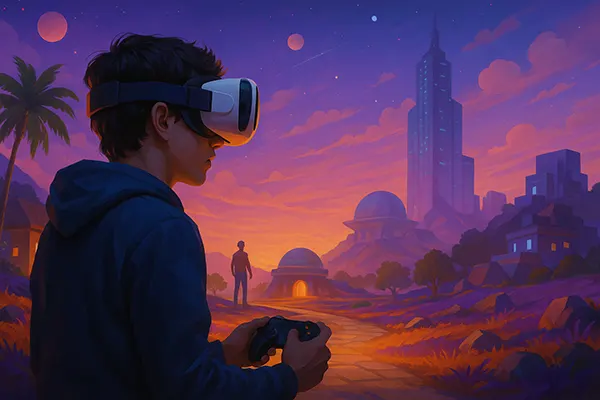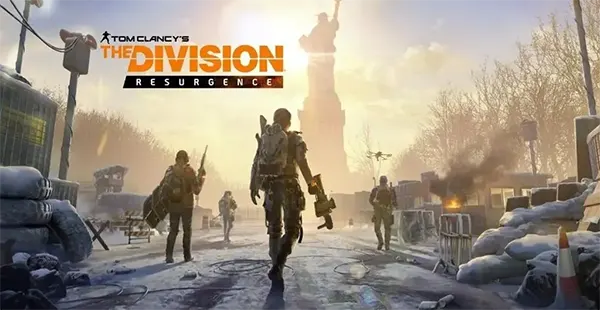
The concept of the Metaverse has moved from speculative fiction into practical application, reshaping how people interact, play, and create. By 2025, the gaming industry has become one of the key drivers of this transformation, with projects such as Roblox, Horizon Worlds, and Decentraland offering different visions of virtual worlds. These environments are not just games but evolving ecosystems where entertainment, commerce, and social interaction blend. Understanding their influence is crucial for evaluating the future of the global gaming market.
Metaverse-based gaming has gained unprecedented momentum due to technological advancements, particularly in virtual reality, blockchain integration, and social networking tools. Unlike traditional titles, these environments provide players with the ability to shape worlds, build communities, and monetise creativity. Roblox, for instance, now attracts over 70 million daily active users in 2025, showcasing the immense demand for user-generated content. This scale demonstrates how gaming is evolving into a collaborative and participatory model.
Another factor driving growth is the adoption of blockchain technology in projects like Decentraland. Players can own virtual land and assets, secured by decentralised systems that ensure transparency and authenticity. These developments redefine ownership in digital spaces, moving from temporary access rights to permanent, tradeable assets. This shift is reshaping not only gameplay but also the economic models surrounding it.
Meta’s Horizon Worlds plays a complementary role by emphasising social experiences. The integration of avatars, shared spaces, and interactive activities illustrates how games are becoming hubs of communication, expanding their function beyond entertainment. By merging social networking with immersive environments, these projects are setting the tone for what many analysts call the “next generation internet.”
One of the main drivers of expansion is the increasing demand for shared digital experiences. Younger audiences, who have grown up with digital ecosystems, see virtual interaction as a natural extension of their social lives. Gaming worlds provide the infrastructure for these communities to flourish, offering creative freedom and social engagement in one space.
Another factor is the commercialisation of virtual economies. Developers and brands now integrate real-world value chains into these ecosystems, from advertising to digital fashion. This integration generates new revenue models while simultaneously deepening player engagement. The virtual economy of Roblox, for example, is now estimated at billions of dollars annually.
Lastly, the technological accessibility of hardware has significantly improved. Affordable VR headsets and cloud streaming services make immersive gaming experiences available to wider demographics. This increased accessibility breaks down entry barriers and ensures broader adoption of Metaverse-related projects.
Among the leading projects, Roblox remains the benchmark for user-generated content and global reach. Its constant updates and developer-friendly tools enable creators to innovate rapidly, producing fresh experiences daily. The scale of participation highlights how important community-driven ecosystems have become to modern gaming.
Horizon Worlds, backed by Meta, has shifted focus towards community-building and immersive events. It serves as a meeting point for people worldwide, hosting concerts, exhibitions, and collaborative projects. Although initially criticised for limited adoption, by 2025 it has established a steady presence among social gamers and digital creators.
Decentraland represents the decentralised wing of Metaverse gaming. By enabling asset ownership through NFTs and land trading, it has introduced a new paradigm of investment within gaming. While adoption is more niche compared to Roblox, it attracts a highly engaged community invested in digital real estate and virtual identity.
A notable trend is the blending of gaming with professional and creative industries. Artists, educators, and entrepreneurs are using these spaces for collaboration, product launches, and virtual classrooms. This cross-industry use extends gaming beyond its traditional scope and into practical applications of the Metaverse.
Another trend is the regulatory discussion surrounding virtual economies. Governments are increasingly monitoring how digital assets are traded, ensuring compliance with financial laws. This adds a new dimension to the growth of these spaces, shaping how businesses and players interact with them.
Finally, partnerships between gaming projects and established entertainment brands are becoming standard. Concerts from global artists inside Roblox or branded experiences in Decentraland highlight how entertainment industries are converging within these ecosystems, making them attractive not just for gamers but for mainstream audiences.

The influence of Metaverse projects extends far beyond entertainment. They reshape the design philosophy of games, making player creativity central to the experience. Instead of consuming content, players are increasingly co-creators, fostering deeper engagement and loyalty. This change is already altering the strategies of major developers and publishers worldwide.
The rise of virtual economies introduces a sustainable financial layer to gaming. In-game assets, when tokenised, allow players to invest, trade, and profit from their participation. This has created entirely new professions, from digital real estate agents to in-game designers, showing the economic potential of Metaverse gaming ecosystems.
Moreover, these projects influence how companies approach long-term player retention. Events, seasonal content, and cross-industry partnerships ensure constant renewal of interest, extending the life cycle of gaming projects. The industry’s shift towards live, evolving environments is a direct response to the success of these Metaverse-driven models.
Looking ahead, the Metaverse gaming industry is expected to integrate more advanced AI-driven interactions. These tools will personalise experiences, offering dynamic storytelling and adaptive environments tailored to individual players. This innovation will further enhance immersion and player satisfaction.
Additionally, the global spread of 5G and upcoming 6G networks will improve connectivity, reducing latency and making large-scale virtual worlds more seamless. The infrastructural improvements will support more ambitious projects, enabling millions to interact in real time without technical barriers.
Finally, the future of Metaverse gaming lies in balancing creativity with regulation. Ensuring safe environments, protecting player data, and managing economic fairness will be crucial for maintaining trust. If these challenges are addressed, the Metaverse could become the foundation of a new era in gaming and digital culture.

Over the last two years, virtual reality gaming has shifted …

The Division Resurgence marks a significant milestone for Ubisoft, extending …